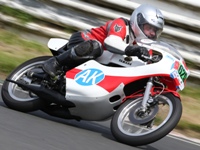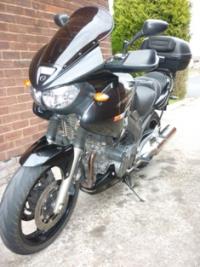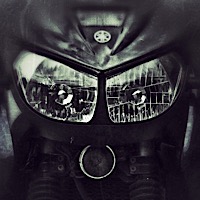
Fork Oil Change On A 9er
#22

Posted 05 August 2012 - 09:36 pm
Did you get around to doing the dust seals Tam? Mine need doing too. Once the fork legs are off the bike, do the dust seals just prise off? My seals aren't leaking either, so I don't want to do a full fork strip.
2002 TDM900 in glorious yellow, NOW SOLD ![]()
2012 Honda Crosstourer VFR1200X. Hyperspeed tourer.
1990 XTZ750 in black, standard apart from Micron silencer. Mechanical restoration complete, cosmetic restoration next on the agenda.. NOW SOLD ![]()
Follow me on twitter
#24

Posted 06 August 2012 - 07:41 am

-----
Fuel Pipes
Givi Top Box
Renthal 758's
Grip Puppies
MRA Bubble
Dip & Hi HIDs
To-Do:
LED DRLs
Loobman
Powercoat Wheels
Hand Guards
-----
 ...
... ...
... ...
... ...
...
#25

Posted 06 August 2012 - 11:52 am
2002 TDM900 in glorious yellow, NOW SOLD ![]()
2012 Honda Crosstourer VFR1200X. Hyperspeed tourer.
1990 XTZ750 in black, standard apart from Micron silencer. Mechanical restoration complete, cosmetic restoration next on the agenda.. NOW SOLD ![]()
Follow me on twitter
#26

Posted 13 August 2012 - 06:18 pm
Ta.
#27

Posted 13 August 2012 - 06:37 pm
Ta.
Any of the 'Hydraulic' type oils specific fork oil or Auto transmission oil or bespoke hydraulic oils, all these are anti-frothing most engine/general oils tend to froth and damping will be unpredictable.
For a challenging summer try the
Round Britain Rally.....
1993 TDM 850 Mk1 ..... 2008 TDM 900 .... 1975, 1979, 1982, 1992 Goldwings, Scott, AJS, Triumph 5TA
#28

Posted 13 August 2012 - 06:52 pm
If so make sure you use proper red rubber grease.
Ordinary HMP grease with attack rubber and cause it to swell and cease to seal.
I had a rubber bush on my VFR swell by at least 25% because the previous owner greased it.
There are a lot of greases out there for specific purposes.
#29

Posted 13 August 2012 - 07:00 pm
Oil.
Good slippery stuff but it’s a liquid and runs every where and can boil off at higher temperatures. Best used in a bath type application where the oil can fall into a container and get recycled back to where its needed, typical example would be the inside of your engine. Or a total loss type system like a Scott oiler.
Grease.
Is essentially Oil in a paste forming a semi solid material. This is good slippery stuff and great for lubricating some thing where you don’t especially need very low drag or where you can’t economically provide an oil bath. A typical application would be wheel bearings spinning at a limited RPM.
High temperature grease.
As above but suited for temperatures a little higher. A typical application would be high speed bearings which run at temperatures above about 110 C.
Molybdenum grease.
Grease as above with molybdenum and probably other solid particle friction and adhesion modifiers. Molybdenum is a slippery metal and is added to grease to act as a coating to avoid bearing metal to bearing metal contact under high loads. Typical application heavily loaded roller or plain bearings.
Copper slip
Is essentially Copper flakes in a paste. This is ideal for areas where high surface temperatures boil off the paste and the copper flakes remain coating the surface of the components and reduce friction between the two components. It works very well provided there is very limited travel between the two components. A typical application would be certain locations with in brake assemblies more of an anti sieze material than a lubricant.
Most of the above products are petroleum based, reliable tried trusted. Petroleum has an unfortunates effect on rubber, it attacks it making it initially swell then harden. Nitrile rubber is more resistant to petrol but not impervious. If you are working next to a hydraulic system then ordinary petroleum based grease can seep under hydraulic seals, attack the seal and contaminate the hydraulic system. For hydraulic systems the red rubber grease has special properties, it will not attack rubber and will not creep under the hydraulic seals.
Red grease will not keep your spider man suit supple. It will provide a protective coating preventing the deterioration of the rubber caused by petroleum products. So in the entirely feasible event that you get lucky in Essex with Esso girl (or reading your post, Esso man) then your suit won’t suffer swelling and cracking, unless of course you remove the protective film and you deliberately risk swelling and crackin. The consequences of meeting an old flame or getting on like a house on fire are of course entirely yours to bare.
__________________
#30

Posted 13 August 2012 - 07:02 pm
#31

Posted 13 August 2012 - 09:23 pm
I have a can of Maplin silicon grease spray that I use on electrics e.g. on the contacts inside my old Garmin Quest bike mount. It was supposed to be waterproof but wasn't.
#32

Posted 05 May 2013 - 02:34 pm
#34

Posted 06 May 2013 - 10:01 pm
Silicone grease is erm made of silicone, it will not eat your rubber seals and will work fine, but red rubber grease is meant for brake seals and oil seals and doesn't affect brake fluid. Been around for years, made of castor oil and china clays. Here is all the blurb on it.
http://www.redrubbergrease.com/
A 1lb tin will last for the rest of your biking days and then some. Lube your brake pistons and seals in it too.
If you haven't got a 27mm spanner 1. 1/16th inch AF is 26.98mm and will fit.
Try to use a six point socket on the alloy cap if possible it will cause less deformation if it is tight as it has more drive contact area.

The Walldrive system Sockets take this six point idea further and drive on the faces of the flats.
http://www.amazon.co...e/dp/B000RO1PRG
Edited by leehenty, 07 May 2013 - 06:41 pm.
#35

Posted 07 May 2013 - 08:16 pm
Hi Lee, these Walldrive sockets sound very much like same principle as "Metrinch" sockets and spanners. They fit AF and metric, and because they put pressure on the flat of a bolt, the won't damage the corners.
Saved me a lot of times.
#36

Posted 12 June 2019 - 08:49 am
Anyone know what spec the standard fork oil is? Owners manual (850) remains inscrutable on the subject....
Thinking of going for a slightly heavier grade or reducing the air gap.
#37

Posted 12 June 2019 - 05:48 pm
Anyone know what spec the standard fork oil is? Owners manual (850) remains inscrutable on the subject....
Thinking of going for a slightly heavier grade or reducing the air gap.
SAE10 I think. I’ve put a 50/50 mix of 10 and 15 in my 900.
84 Honda XL600R ![]()
04 TDM900 ![]()
21 KTM 790 Adventure ![]()
#38

Posted 12 June 2019 - 06:27 pm
SAE10 I think. I’ve put a 50/50 mix of 10 and 15 in my 900.
Cheers Jim, 15w sounds a reasonable bet in the 850 as well.
#39

Posted 02 August 2019 - 09:04 pm
I started doing my fork seals today on my 2006 TDM 900.
First time I've attempted fork seals and when i took the forks apart ive found the internals are different on each fork. the left hand side has 2 spacers where as the right hand side has the same internals as shown in the workshop manual.
Changing seals etch was easy enough but for the love of me I can't get the internals back together.
I have the damper rod in and measure the air gap and get the level current but when trying to reassemble the rod keeps dropping out of the cap and into the fork itself which i then have to fish out.
The only solution i can see is to pour all the fluid into a container once measured, rebuild the internals, fit them and then repair the measured fluid?
If theres an easier way could somebody let me know?
#40

Posted 05 August 2019 - 05:32 am
You pour the oil in after assembling everything but the top cap, right ? ...and at that time, forks are extended to full length...
Edited by Bjørge, 05 August 2019 - 05:32 am.
1 user(s) are reading this topic
0 members, 1 guests, 0 anonymous users
























